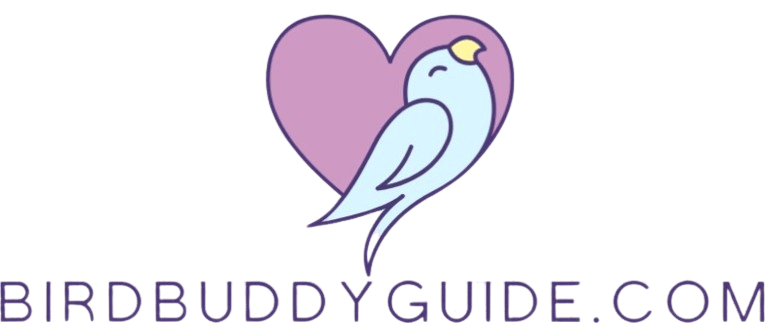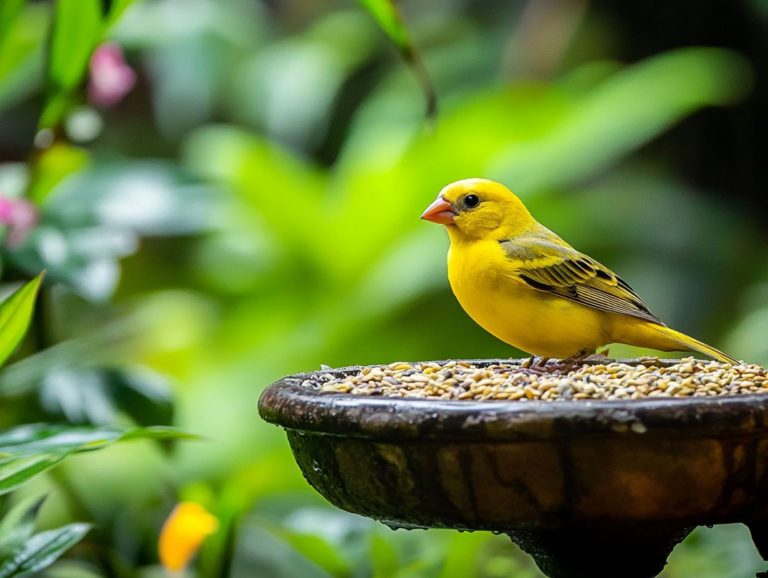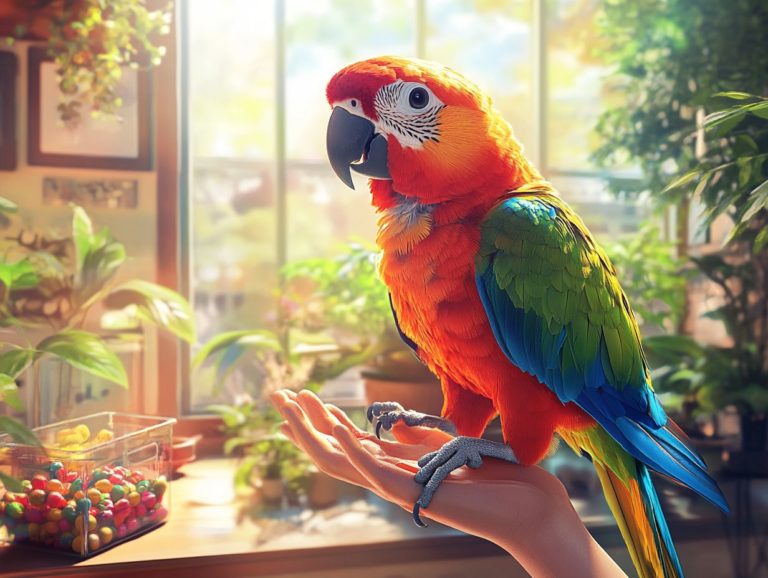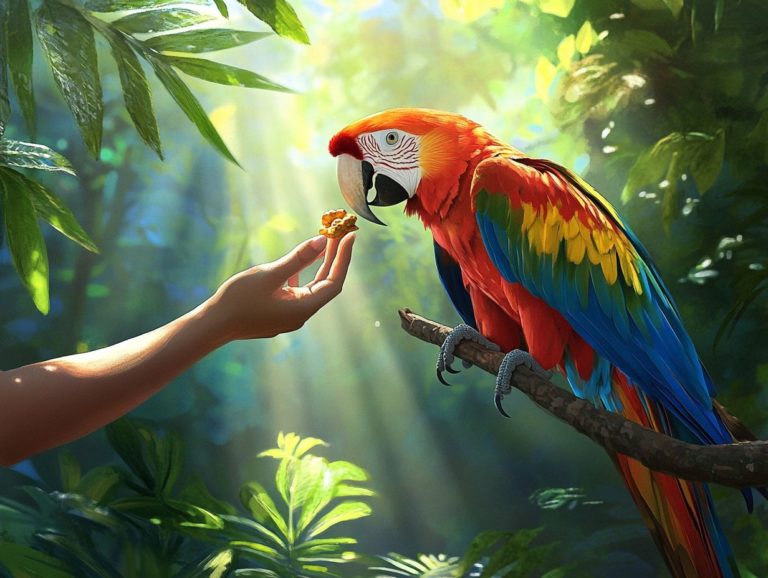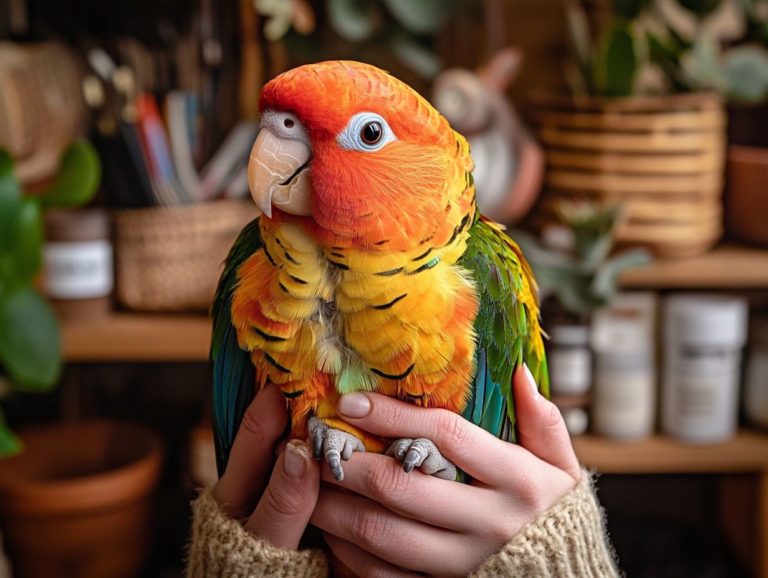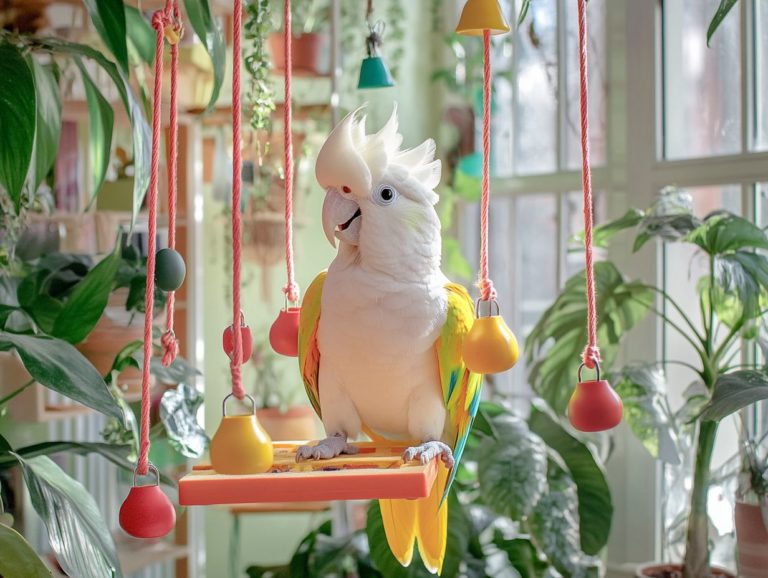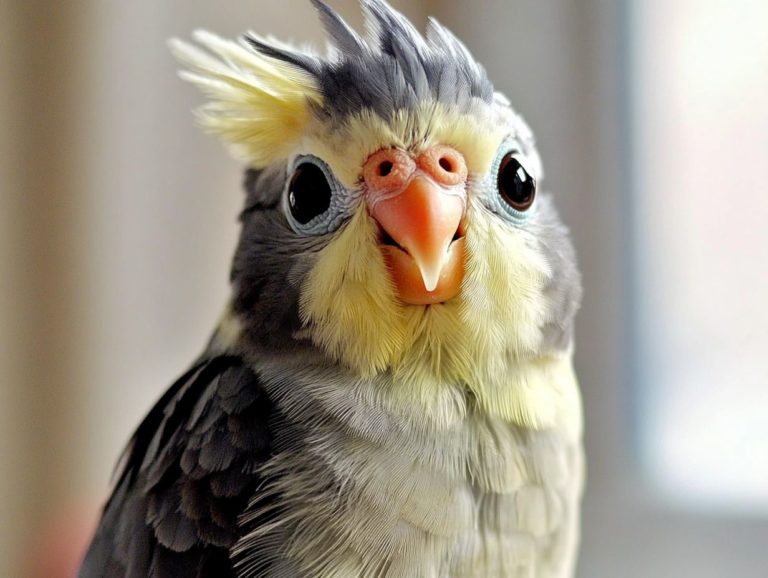Navigating Cockatiel Molting: A Care Guide
Cockatiel molting is a natural and essential process that every discerning bird owner should fully grasp. This guide delves into the intricacies of molting, detailing its frequency and typical duration.
You ll uncover the signs and symptoms to monitor both physical and behavioral that indicate your cockatiel is navigating this significant transformation.
With practical insights on nutrition, grooming, and common pitfalls to steer clear of, you ll be well-prepared to support your cockatiel during this pivotal time.
Continue reading to learn how to create a comfortable environment and provide the extra care your cherished pet deserves.
Contents
- Key Takeaways:
- Understanding Cockatiel Molting
- Signs and Symptoms of Molting
- Physical Changes to Look Out For
- Behavioral Changes to Expect
- Managing Molting in Cockatiels
- Common Mistakes to Avoid during Molting
- Supporting Your Cockatiel During Molting
- Frequently Asked Questions
- What is cockatiel molting and why is it important to understand?
- How often do cockatiels molt and for how long?
- What are some signs that my cockatiel is molting?
- How can I help my cockatiel during molting?
- Can I still handle my cockatiel during molting?
- What should I do if I notice abnormal or excessive molting in my cockatiel?
Key Takeaways:
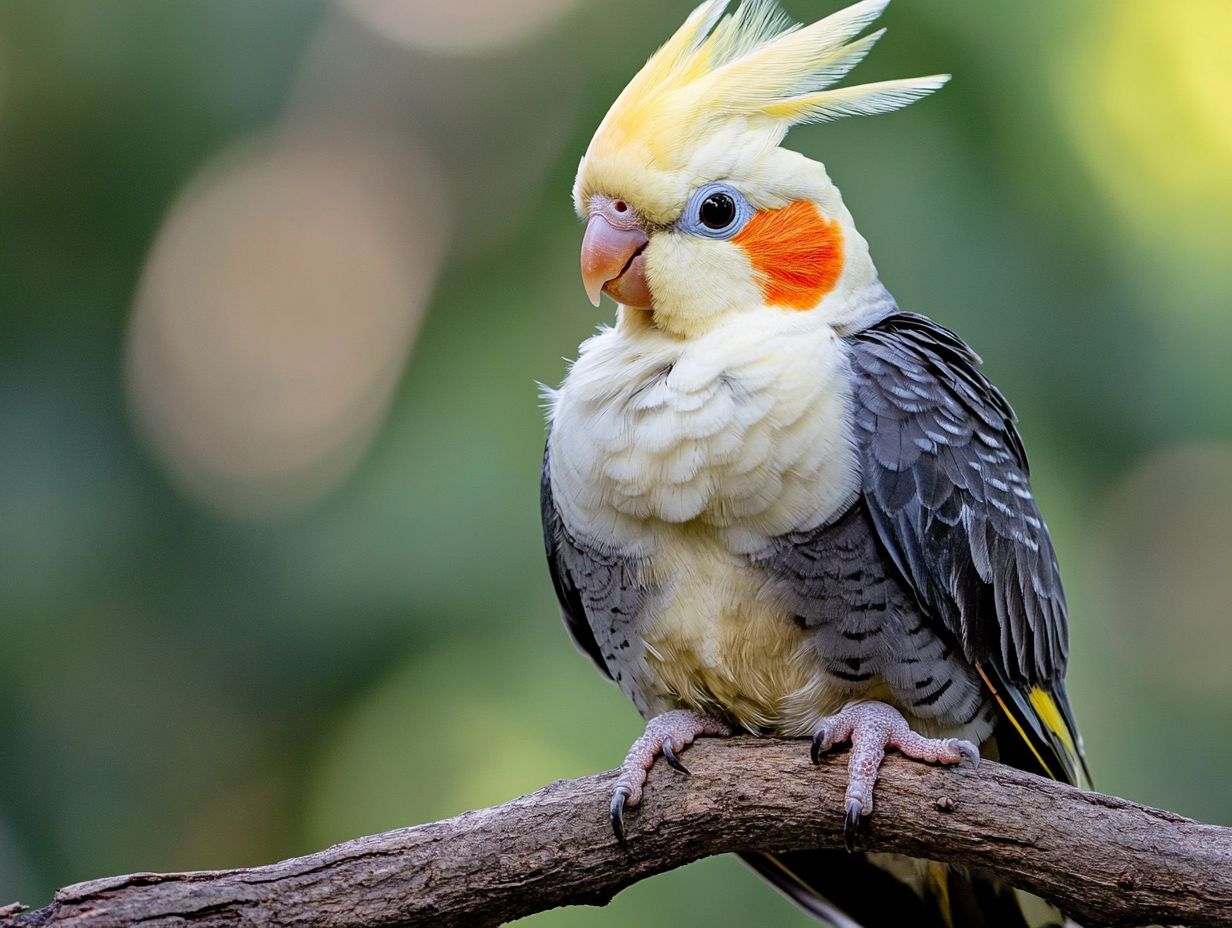
- Understand cockatiel molting to provide the best care.
- Recognize changes in behavior and adjust nutrition accordingly.
- Avoid mistakes like over-handling; provide a cozy space during molting.
Understanding Cockatiel Molting
Understanding cockatiel molting is essential for you as a bird owner, especially if you care for parrots. This natural process is vital for the health and well-being of your vibrant pets.
During molting, cockatiels shed old feathers and grow new ones. This cycle is influenced by seasonal changes, environmental factors, and the bird s overall health. By grasping the nuances of this behavioral change, you can better support your feathered companions through proper nutrition, grooming, and stress management.
What is Molting?
Molting is a fascinating natural process in birds, where they shed old feathers to make room for fresh growth. This ensures their feathers remain in optimal condition and quality. This vital biological cycle revitalizes worn or damaged feathers and plays a crucial role in the overall health of avian species.
During this period, paying attention to nutrition is important, as birds need specific vitamins and minerals to support the vigorous growth of new plumage. A balanced diet rich in protein, amino acids, and essential fatty acids important for healthy feather growth is key to facilitating this impressive transformation.
By maintaining proper dietary intake during molting, you can significantly influence the strength and luster of feathers attributes critical for insulation and flight.
Thus, appreciating the connection between nutrition and molting underscores the importance of a well-rounded diet for promoting healthy feather production.
Frequency and Duration of Molting
The frequency and duration of molting in cockatiels can vary significantly based on the season and individual factors, such as health and environmental conditions. During spring and autumn, you ll likely see your cockatiel shedding feathers and growing new ones better suited to the changing temperatures.
This process can lead to fluctuations in behavior; your bird might become a bit irritable or lethargic as it expends energy on feather regrowth. It’s crucial for you to recognize these signs and maintain a comfortable environment. Providing stable temperatures, adequate nutrition, and cozy resting spaces will help your feathered friend navigate this transition smoothly.
Signs and Symptoms of Molting
Recognizing the signs and symptoms of molting in cockatiels is crucial for you to monitor their health and ensure they remain comfortable during this process. This phase can occasionally lead to discomfort or behavioral changes, making your awareness of these signs all the more important.
Have you noticed any changes in your cockatiel s behavior during molting?
Physical Changes to Look Out For
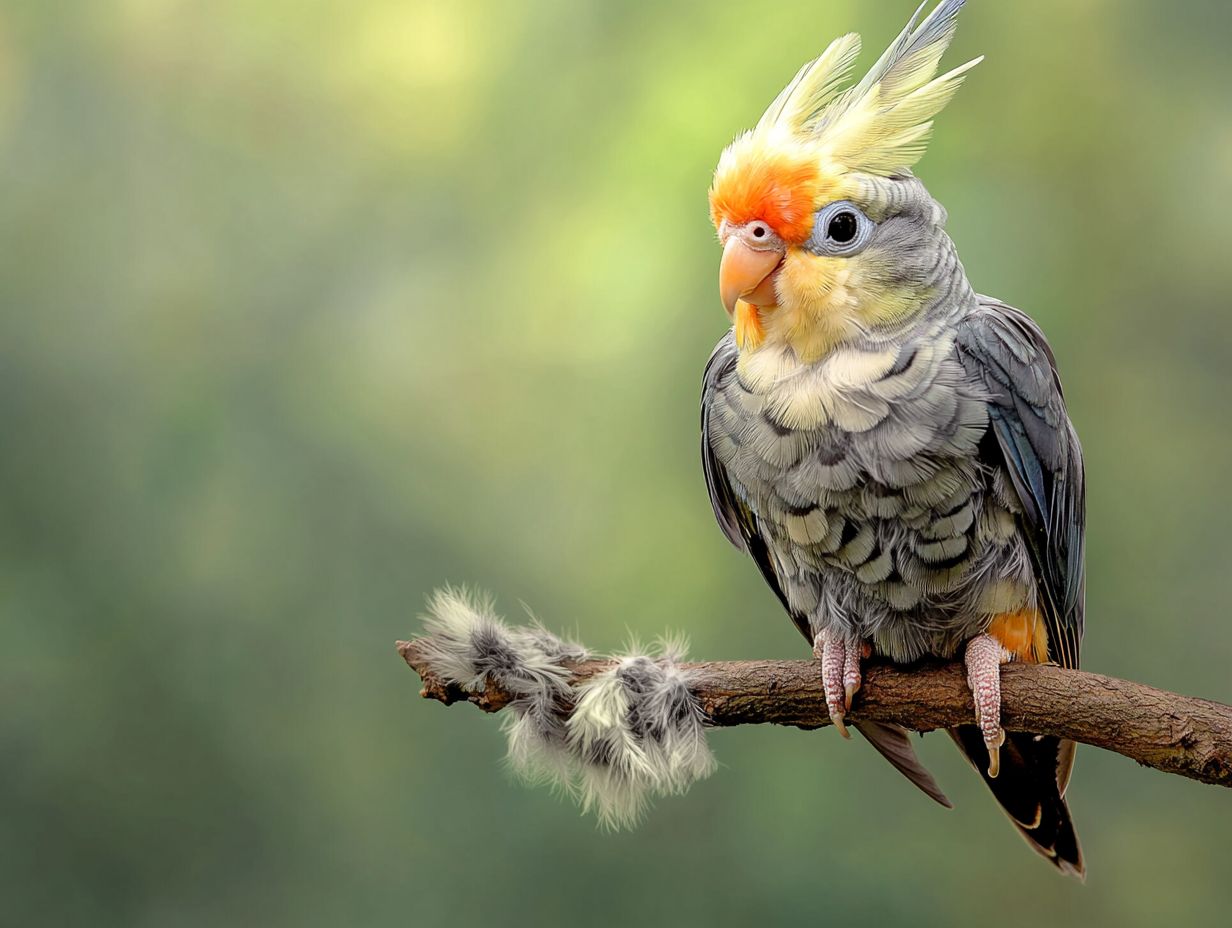
During molting, you’ll observe notable physical changes in your cockatiel. This includes shedding old feathers and new feathers just starting to grow, known as pin feathers, which can be quite tender.
You may notice that your bird’s vibrant plumage might appear dull and uneven. Look for visible pin feathers small, feather-covered shafts poking out from their skin, indicating fresh feather growth.
You might see signs of irritation or discomfort, like excessive preening or scratching. This suggests your bird may feel a bit unsettled by these changes. Offering gentle handling is essential; it fosters trust and alleviates stress, helping your cockatiel navigate the molting phase with ease and comfort.
Behavioral Changes to Expect
During the molting process, your cockatiel may display some behavioral changes, such as increased preening, irritability, and a greater need for emotional support from you.
These changes often arise from discomfort due to feather loss, making your feathered friend feel more vulnerable than usual. It s not uncommon for them to withdraw from social interactions or respond defensively to harmless stimuli.
To ease stress during this phase, provide extra attention, maintain a calm environment, and engage in gentle bonding activities. Offering a favorite treat or creating a cozy spot can enhance comfort and reassurance as your cockatiel adjusts to its new feathers.
Managing Molting in Cockatiels
Effectively managing molting in cockatiels requires a well-rounded strategy focusing on nutrition, grooming, and a nurturing environment. This ensures your feathered companion’s health and well-being during this transitional phase.
Proper Nutrition and Diet
Providing a balanced diet during molting is vital for your cockatiel. They need extra vitamins and supplements to support feather growth and overall health.
During this critical phase, ensure your bird receives a variety of nutrient-rich foods. Incorporating fresh fruits and leafy greens enhances their diet and supports hydration, especially as they shed old feathers. Offering high-quality pellets specifically formulated for feather development can significantly aid this process.
Don’t overlook vitamins A, E, and D, along with calcium and omega fatty acids, which are essential for strengthening new feathers. You might also consider offering specialized supplements to boost their feathering and overall vitality during this period. Your attention to their diet will pay off with vibrant, healthy plumage.
Grooming and Bathing
Regular grooming and bathing are crucial during a cockatiel’s molting phase. This eases the discomfort caused by pin feathers and ensures cleanliness.
Establishing a consistent grooming routine significantly enhances your cockatiel’s overall well-being. During this period, gently manage those troublesome pin feathers, as they can be quite uncomfortable. Regular baths not only cleanse the feathers but also hydrate the skin, promoting healthy feather growth.
Consider using specialized products like feather conditioners and bathing sprays to improve the grooming experience, keeping your bird comfortable and free from irritants.
Incorporating these practices helps your cockatiel maintain its vibrant appearance and strengthens the bond between you and your feathered companion.
Common Mistakes to Avoid during Molting
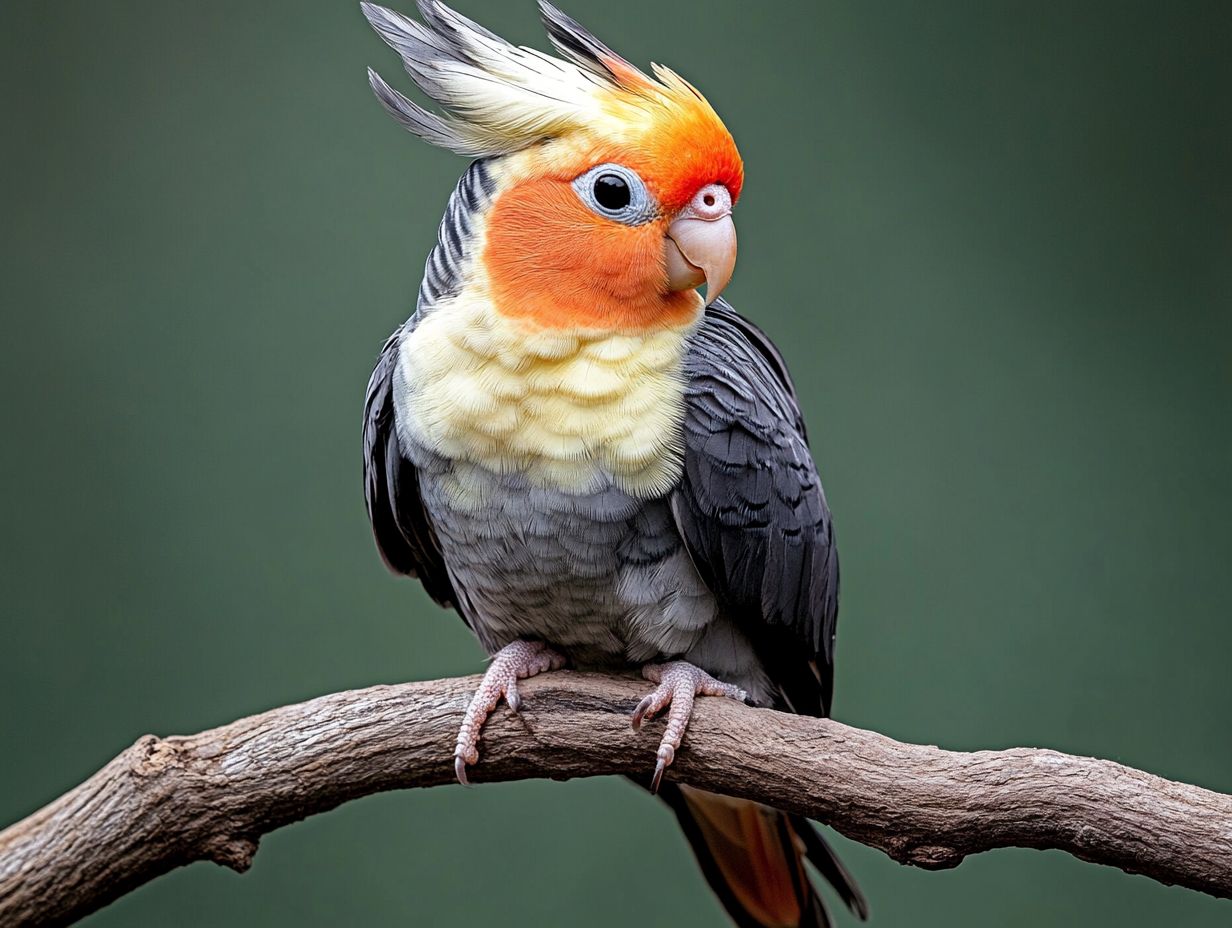
Avoiding common mistakes during the molting process is essential for ensuring the health and comfort of your cockatiel. Improper handling or excessive supplementation can lead to stress and discomfort for your feathered friend.
Prioritizing a gentle approach and balanced care during this time will keep your cockatiel feeling its best.
Take action now to support your cockatiel through molting!
Handling and Stress Management
Proper handling and stress management are crucial during a cockatiel’s molting phase. These delightful birds can become more sensitive and irritable due to discomfort from pin feathers.
During this time, employing gentle techniques is essential for ensuring your feathered friend s comfort and well-being. Approach your cockatiel with a calm demeanor and pay close attention to any behavioral changes. Stress can escalate quickly if the bird feels threatened or uncomfortable.
By providing a cozy environment with soft perches and some quiet time, you create a sanctuary that allows your cockatiel to navigate its molting journey more peacefully. If you’re unsure about the process, knowing what to do if your bird is molting is essential. Recognizing signs of frustration or anxiety during this transition is vital. This awareness can lead to a healthier, happier pet in the long run.
Over-supplementing and Over-grooming
Over-supplementing and over-grooming your cockatiels during their molting phase can lead to discomfort and health concerns. It s crucial to find a harmonious balance in your care practices.
When you overwhelm these delightful birds with excessive vitamins or grooming routines, it can disrupt their natural balance, potentially resulting in feather plucking or skin irritation. A cockatiel that faces too much grooming may experience increased stress, impacting its overall well-being.
To ensure proper care during molting, focus on providing a well-rounded diet rich in seeds, fruits, and vegetables. Avoid sudden dietary changes. Instead of frequent baths, offer a misting session a couple of times a week to keep their feathers clean without overwhelming them.
Creating a calm environment will help facilitate a smoother molting process, allowing your charming companions to thrive.
Supporting Your Cockatiel During Molting
Supporting your cockatiel during molting is crucial for their well-being and comfort. This process can be both stressful and physically demanding for your feathered companion, so understanding bird molting: what to expect can make all the difference with your attentive care.
Creating a Comfortable Environment
Creating a comfortable environment for your cockatiel during molting means fine-tuning factors like humidity, light exposure, and the right products to ensure they feel secure.
Keep humidity levels ideally between 40-60% to help your feathered friend experience less discomfort and foster healthy feather growth. Ensuring they get plenty of natural sunlight is equally important. Positioning the cage near a window works wonders, but be careful of any drafts or direct heat.
Incorporating tools like humidity monitors, misting spray bottles, and specialized molting diets can significantly enhance their well-being. Providing perches made from a variety of materials encourages natural curiosity, while cozy hiding spots offer safety during this vulnerable time, creating a nurturing space that truly supports them.
Providing Extra Care and Attention
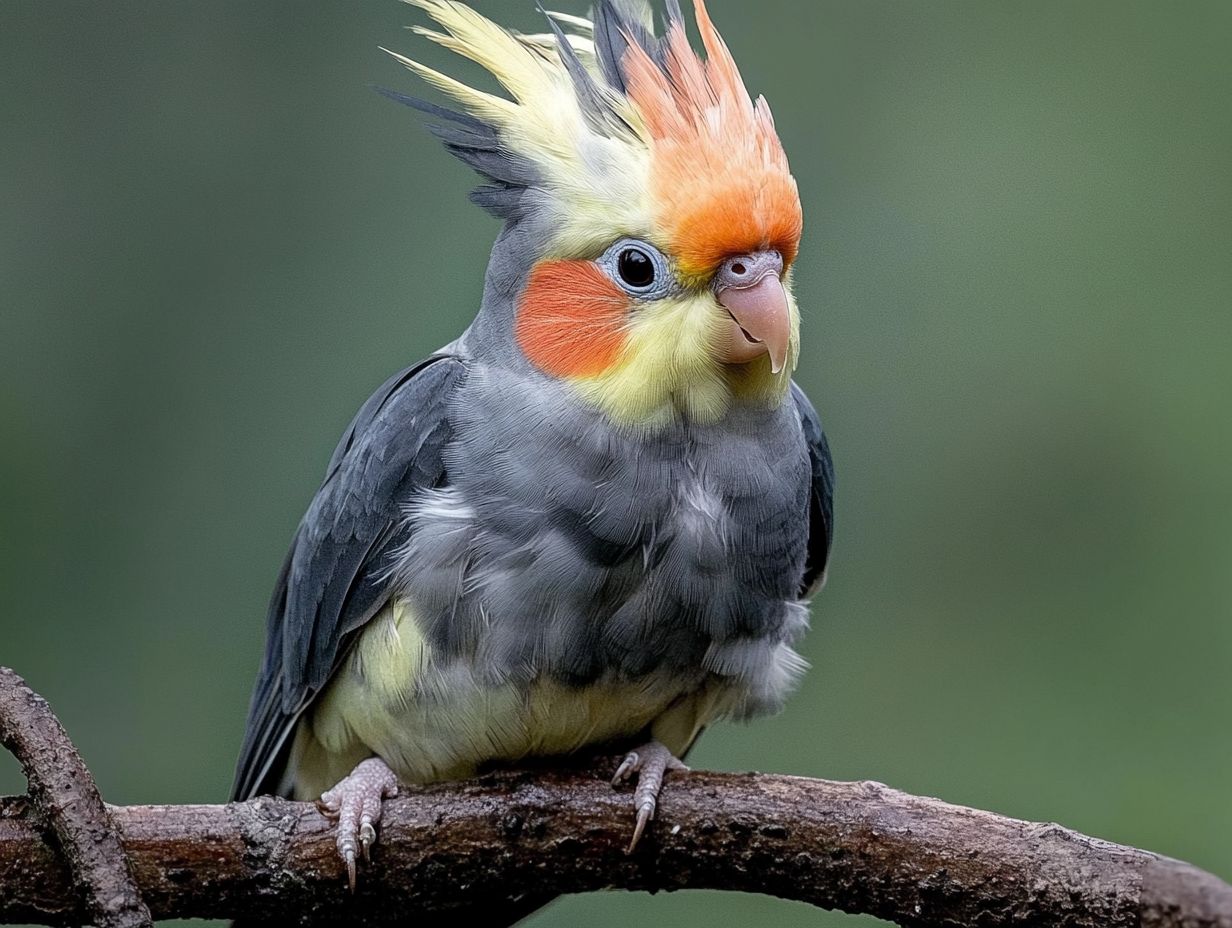
During the molting period, it s essential to provide extra care and attention to your cockatiel. They may need more emotional support and require careful monitoring for any health-related issues.
This time of change can be challenging for your feathered friend. They face physical discomfort and might exhibit altered behaviors. Act promptly if you notice any changes in their mood or activity levels, as any signs of stress or irritability should prompt immediate action. Socialization is key during this phase, and gentle interaction can reassure them.
Establishing consistent routines such as incorporating extra playtime, offering a balanced diet rich in vitamins, and creating a safe, comfortable environment will enhance their well-being. A little extra patience from you can make all the difference in ensuring a smoother transition through this delicate process.
Frequently Asked Questions
What is cockatiel molting and why is it important to understand?
Cockatiel molting is the natural process of shedding and regrowing feathers in birds. Understanding it is important because it affects the health and appearance of your cockatiel. Improper care during molting can lead to health issues.
How often do cockatiels molt and for how long?
Cockatiels typically molt once a year, either in the fall or spring. This is when they lose old feathers to make way for new ones.
The molting process lasts anywhere from 6 to 12 weeks, depending on the age and health of the bird.
What are some signs that my cockatiel is molting?
Common signs of molting include excessive preening and loss of feathers. You may also notice changes in behavior, like increased napping or a decreased appetite.
Your cockatiel may appear more irritable or restless during this time.
How can I help my cockatiel during molting?
Provide a balanced diet rich in protein and calcium to support feather growth. Offer a shallow dish of water for bathing; this soothes their skin and helps remove loose feathers.
Can I still handle my cockatiel during molting?
Yes, it is safe to handle your cockatiel during molting. Just be gentle and avoid touching any new feathers, as they can be sensitive and easily break.
What should I do if I notice abnormal or excessive molting in my cockatiel?
If you notice worrying changes, don t hesitate to reach out to an avian vet! An abnormal amount of feather loss or difficulty growing new ones could signal an underlying health issue.
Stay informed and check back for more tips on cockatiel care!
